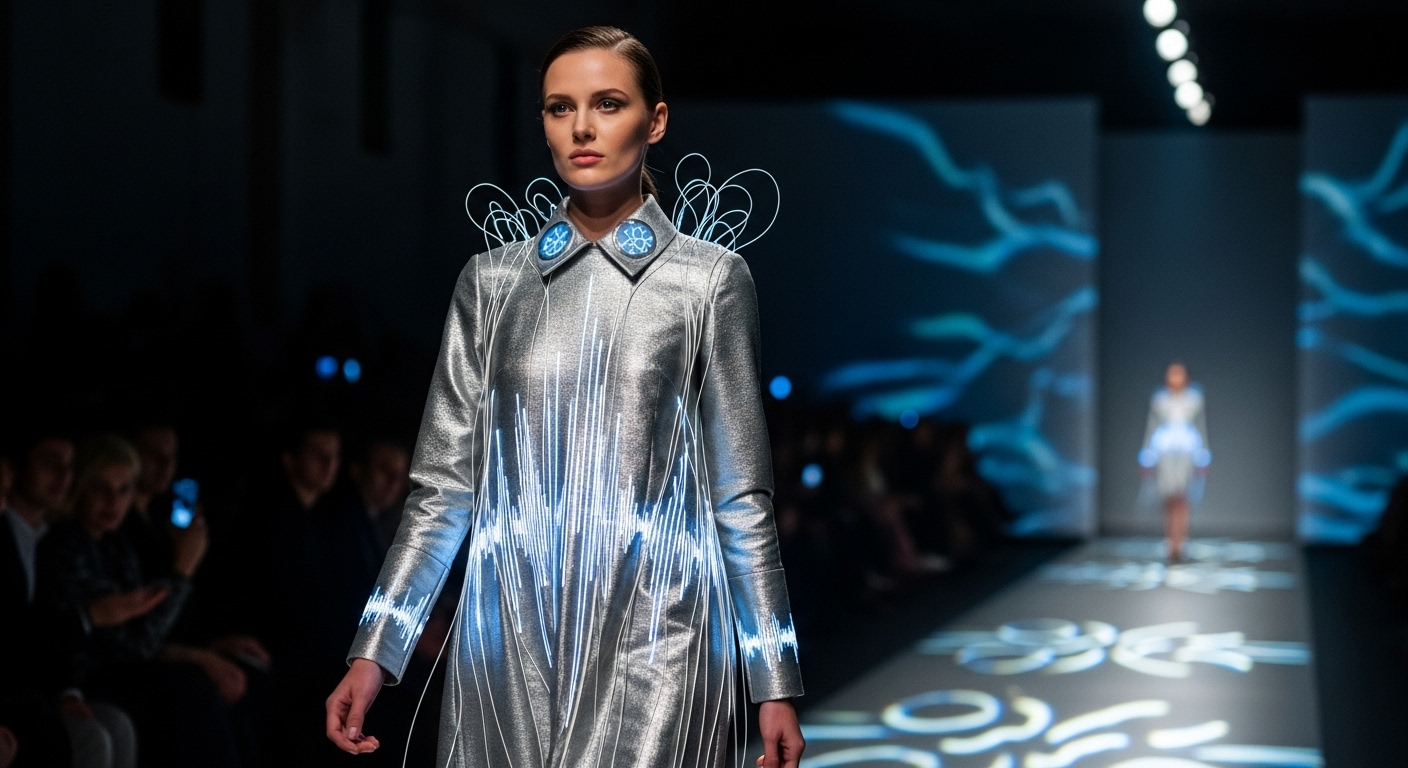Holographic Couture: Fashion's Digital Frontier
In the ever-evolving realm of haute couture, a groundbreaking fusion of technology and fashion is redefining the boundaries of sartorial expression. Holographic couture, a cutting-edge concept that marries high-end fashion with advanced holographic technology, is rapidly emerging as the next big thing in the world of style. This innovative approach to clothing design is not only pushing the limits of creativity but also challenging our perceptions of wearable art. As fashion houses and tech companies collaborate to bring this futuristic vision to life, we stand on the brink of a revolution that could forever alter the landscape of the fashion industry.

Technological Advancements Driving the Trend
The recent surge in holographic couture has been largely driven by rapid advancements in projection mapping, augmented reality, and flexible display technologies. Companies specializing in wearable tech have developed ultra-thin, flexible screens that can be seamlessly integrated into fabric, allowing for dynamic, customizable patterns and designs. Additionally, improvements in miniaturized projectors have made it possible to create three-dimensional holographic overlays on traditional garments, effectively transforming them into living, breathing works of art.
The Intersection of Fashion and Digital Art
Holographic couture represents a unique convergence of fashion design and digital artistry. Designers are now collaborating with software engineers and visual effects artists to create stunning, otherworldly garments that blur the line between physical and virtual reality. These pieces often feature intricate, animated patterns that respond to the wearer’s movements or environmental stimuli, creating a truly immersive and interactive fashion experience. This fusion of disciplines is not only expanding the creative possibilities for designers but also attracting a new generation of tech-savvy consumers who crave innovative and personalized fashion experiences.
Sustainability and Customization
One of the most intriguing aspects of holographic couture is its potential to address some of the fashion industry’s long-standing sustainability issues. By incorporating digital elements into physical garments, designers can create pieces that are infinitely customizable without the need for additional material resources. This could potentially reduce waste and overproduction, two major concerns in the fashion world. Moreover, the ability to instantly change a garment’s appearance through holographic technology opens up new possibilities for versatile, multifunctional clothing that can adapt to different occasions or personal preferences.
Challenges and Future Prospects
Despite its immense potential, holographic couture faces several challenges on its path to widespread adoption. Issues such as battery life, durability, and the need for specialized care and maintenance are currently limiting factors. Additionally, the high cost of production means that holographic fashion remains largely confined to the realm of haute couture and avant-garde runway shows. However, as technology continues to advance and become more accessible, industry experts predict a gradual integration of holographic elements into ready-to-wear collections and even everyday clothing.
The Cultural Impact of Digital Fashion
The rise of holographic couture is not just a technological phenomenon; it’s also sparking important conversations about the nature of fashion and self-expression in the digital age. As our lives become increasingly intertwined with technology, the concept of a digital wardrobe that can be instantly changed or shared across virtual platforms is gaining traction. This shift is challenging traditional notions of ownership and materiality in fashion, potentially paving the way for new business models and forms of creative expression.
Holographic Couture in the Entertainment Industry
The entertainment industry has been quick to embrace the possibilities of holographic fashion, with musicians and performers incorporating these futuristic garments into their stage shows and music videos. Iconic moments like Beyoncé’s holographic dress during her Formation World Tour have demonstrated the power of this technology to captivate audiences and create unforgettable visual experiences. As holographic couture continues to evolve, we can expect to see even more stunning applications in film, television, and live performances, further blurring the lines between fashion, technology, and entertainment.
In conclusion, holographic couture stands at the forefront of a new era in fashion, where the physical and digital worlds seamlessly blend to create unprecedented forms of artistic expression. As designers, technologists, and artists continue to push the boundaries of what’s possible, we are witnessing the birth of a new aesthetic that challenges our perceptions and invites us to reimagine the very fabric of fashion. While challenges remain, the potential of holographic couture to revolutionize the industry and our relationship with clothing is undeniable. As we look to the future, one thing is clear: the fashion landscape of tomorrow will be more dynamic, interactive, and digitally integrated than ever before, with holographic couture leading the way into this brave new world of style.





